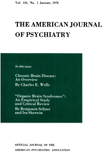Abstract
The experiment to determine the threshold of frustration was conducted with normal, neurotic and psychotic subjects. It was difficult to present a problem which was equally motivating, and which would always result in frustration at the point of failure. Preliminary experimentation showed that a learning situation in which each subject was psychologically prepared to consider success imperative was the best method of creating frustration.
It was much easier to create frustration in the children than in the adults, and the reactions of the children were much more consistent. The difficulty of frustrating adults was probably due to two factors, the rationalization of their failures and the inability to motivate them in the task presented. Most of the children were easily motivated in a learning situation, obviously because they were accustomed to respond to learning situations in school. The adults, however, evaded the frustration crises because they tended to create many reasons why they could not complete the tasks successfully.
The threshold of frustration was measured in terms of the rapidity with which frustration could be induced and the difficulty of the task which produced it. The criteria of frustration were:
1. Disruption of the integrated and planned activity.
2. Haphazard activity involving the hands, arms and body.
3. Significant changes of the physiological reactions, such as the rhythm and amplitude of the brain waves, skin resistance, respiration, blood pressure and pulse.
The most consistent physiological reactions which correlated with frustration were skin resistance as measured by the photopolygraph, and respiration. Changes in the brain waves were not as significant as the other measures, although there was a marked and consistent difference between the schizophrenic and the normal. The electroencephalographic tracings in the schizophrenic individuals were unusually stable, with few changes in rhythm or amplitude as contrasted with the many variations in the normal and neurotic individuals.
The threshold of frustration was significantly higher in all of the schizophrenic subjects than in the neurotic or the normal. The neurotic threshold was quite variable, and was lower than in the normal. Whether the threshold of frustration of the neurotic individual correlates with the severity of the neurosis could not be adequately ascertained because there was no way of clinically quantifying a neurotic condition.
No claim can be made regarding the diagnostic value of the threshold of frustration. It is not too presumptuous, however, to claim that it can be a valuable adjunct to a clinical diagnosis. It may be especially valuable because the threshold can be determined objectively and quantitatively, although one must be aware of the inevitable difficulties involved in determining frustration in an artificial laboratory situation. The method may be especially valuable in those cases where the clinical data are not sufficiently adequate and where differentiation between individuals is necessary.

